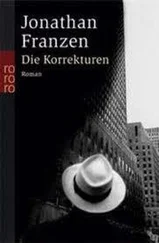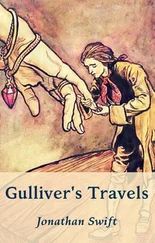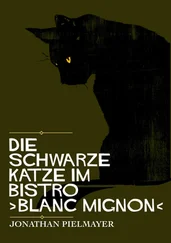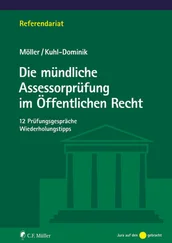Upstairs, in Kay’s bedroom, the laugh track still audible below, Molly played back John’s message.
“It’s me again. Mrs Howe, if you’re picking up these messages, please, maybe you don’t know who I am, but I’m begging you, let Molly hear them, or let her know I called. Molly, I can’t sleep, I won’t leave the apartment in case you call. What is happening? I don’t understand it but I can let it all go if I just could hear that you’re all right. Please. Please. If there’s something I’ve done to make you angry with me … I’ve thought and thought and I can’t think what it could be. I’m just at a loss, I’m at a loss. Please get in touch with me somehow. I don’t have your address out there but I’m thinking of coming anyway. Have pity on me. I’m so in love with you, and until I can figure out what’s happened to you I’m in agony. I love you. Please call. Please call home.”
Still on the bureau in Molly’s room was the bag from the drugstore. She took it into the bathroom the next morning, and when she came out again she had a simple, symbolic confirmation of what she already knew, which was that she was pregnant.
IN THE BASEMENT pool room, or waiting for lunch on the stools beside the pantry, or walking together on the brick path through the orchard — as if afraid of being overheard — some of Osbourne’s employees stalled for time by trying to guess the nature of the client whose identity he was withholding from them. Elaine said an eight-page print insert could only mean a fashion concern of some kind; I mean, she said, can you ever remember seeing anything like that that wasn’t about fashion? Daniel, though, insisted there had to be more to it than that, there had to be something objectionable or controversial about the mystery client, or else where was the benefit in keeping the name from them? The agency wasn’t thriving, and Osbourne felt forced to make some sort of compromise in order to bring in some money — it was easy enough to understand. But John, though he was feeling sure about less and less, knew Daniel was wrong; he himself accepted with no skepticism at all Osbourne’s definition of his motives as purely on the level of aesthetic experiment. He wanted the issue of influence taken off the table, so to speak; he wanted their next efforts shaped by no sensibility other than their own. John defended this idea — or not the idea, exactly, but the transparency of the motives behind it — with such unconscious vigor that by the time he finished they were all nodding sagely at him, as if he were only confirming what they already knew.
But the more clearly John understood what was wanted of him, the less equipped he felt to produce anything. With his pads and his pens, a drafting table wedged under the window in the west-wing bedroom where he had begun spending more and more of his nights, he looked out at the cherry trees, at the delivery trucks as they spun through the gravel in the driveway at the back of the house, and he came up with nothing.
It was a great relief to him the day Milo tracked him down in his bedroom. Life in a Southern college town had only made Milo more eccentric, even though, so far as John knew, he seldom left the mansion these days at all. Gaunt, his face and arms ridden with beauty spots, his peroxided hair making him look less like a fashionista than like his own father, he wandered the halls distractedly at all hours; John knew for a fact that he had not yet learned everyone else’s name. Milo knocked on John’s door and walked in without waiting for an answer. He had some questions about materials, he said, just audibly. He hadn’t had a lot of experience with the world of print, and he wasn’t sure if what he had in mind was possible.
John heard him out, and told him that what he wanted was probably doable, technically; he added, reflexively, that it would at least double the cost of the client’s buy.
Milo nodded and looked somber at this news, though it clearly meant nothing to him.
“But you know what,” John said. “I’d take it to Mal anyway.”
Two weeks later, they did. Milo’s idea was to bind into each magazine one double-sided sheet of a kind of Mylar derivative that John, a couple of years earlier, had been shown in conditions of great secrecy by a printer acquaintance in New Jersey, a guy who wanted to know if John’s girlfriend, Rebecca, had any expertise in patent law. Now John got in touch with him again. The stuff still could not hold any kind of type, which was the one bug the printer had been trying to get out of it. It was, however, perfectly reflective, almost without distortion — which was all they were now interested in. In other words, the advertisement Milo had in mind was a mirror.
Osbourne sat looking into this mirror, holding it before him at his antique desk as John and Milo stood nervously to one side, for two minutes or more. His face grew redder and redder. Then he asked the two of them to leave his office, and to close the door behind them; which they did. A short while later the door opened and their boss brushed past them; they trailed behind as he blew through the main rooms of the mansion, tapping everyone he found on the shoulder and summoning them to the dining room. When they were gathered there, he thanked them all for their hard work, told them the search was over, and gave them all the rest of the week off.
The client, it came out in the end, was an Internet search engine. They did not balk at the increased costs, nor at the notion that the name of their company would appear nowhere in or near the ad. It ran in Vanity Fair, the New Yorker, Details, and five other periodicals, all within the same ten days. Osbourne himself took to hanging out in the ballroom at all hours, staring at a computer screen, trolling the Internet for rumors as to the identity of the advertiser — even, when he couldn’t stand it anymore, entering various chat rooms anonymously.
That was the beginning of everything. The mirror ad was a sensation, denounced in newspaper editorials, clucked over on the evening news, the subject of jeremiads not just in advertising trade publications but in art journals as well. Artforum even ran a special section about it, a kind of roundtable collection of short essays by art historians and museum curators. Then it was selected for the Biennial at the Whitney Museum. Osbourne, though he professed to hate awards, personally entered the mirror in every competition, in the ad industry and outside of it, he could think of. By the time those awards were given out, the search-engine company’s stock had split twice, and Osbourne had so much new business that it became necessary, against his wishes, to expand the staff.
And the bright future of the agency — Palladio, as Osbourne had named it months ago, though his own staffers were too superstitious about pretension at that stage to use it — seemed increasingly to belong to the artists, like Milo, whose own ascendancy after the mirror campaign was unquestioned. There was not an ounce of ambition in him. He smoked and wore white T-shirts and appeared — though the others were too embarrassed to ask him about it — to cut his own hair; and if he spent more nights in the west-wing bedrooms than the others, it was not out of a desire to put in (or be seen putting in) long hours, but because he lived in his work, his life did not seem quite real to him outside of it, and thus the apartment he rented in town did not serve as any sort of escape from anything. Osbourne had once mentioned to them — in an early, starry-eyed bull session back when they had very little work to do — that he was torn between wanting to break the practice of not crediting individual artists for their work in ads and wanting to uphold the concept that widely disseminated images, particularly if they were successful, mooted questions of authorship in the first place. But Milo said he didn’t want any credit for the mirror anyway. In fact, his suggestion was that it be credited “from the studio of Malcolm Osbourne,” as with Brueghel or Rembrandt. Osbourne rejected that idea, but John could see how pleased he was with it.
Читать дальше












